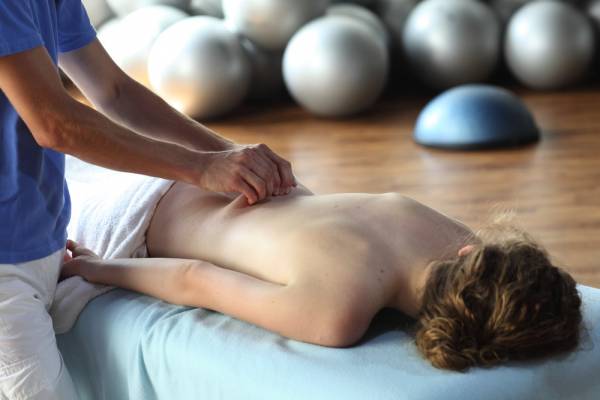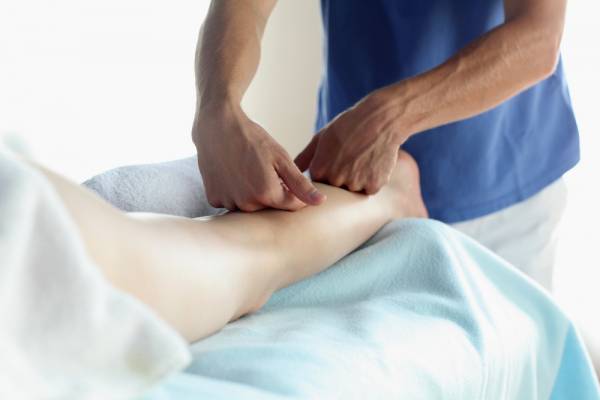Last week I discussed general recovery techniques for the hard training weightlifter. This week I will more fully investigate one of the more effective interventions that can help with the recovery process.
Last week I discussed general recovery techniques for the hard training weightlifter. This week I will more fully investigate one of the more effective interventions that can help with the recovery process.
Soft-tissue treatment is an important part of the recovery process for many weightlifters. Massage is probably the most favored method. Massage is used to speed recovery following heavy single workouts, competitions, or during high-intensity cycles. Massage also plays a part in the prevention of injury, especially those that might arise due to overuse and overload. And finally, we can’t forget the importance of massage in the injury rehabilitation process.
How Massage Therapy Helps
The physical effects of massage therapy can greatly improve a weightlifter’s health and lifestyle by alleviating pain and reducing potential for injury in several ways. The ultimate impact of sports massage therapy is to increase the health of the body’s internal tissues by improving circulation of blood and nutrients, while simultaneously removing toxins. This is accomplished by varying type of stroke use.
Long stroking movements are used to move fluid through the circulatory system. How this works is interesting. As pressure increases in front of the masseur’s stroke, suction is created behind the stroke. This helps repair damaged muscles by increasing a fresh blood and oxygen supply and removing toxins that have built up in the tissue. Deep massages help to regulate the pores in the fibrous tissues, which increases permeability. This allows for more fluids and nutrients to flow through the tissue. Waste products are removed and new oxygen and nutrients are supplied.
Stretching of the tissues during a massage helps muscle fibers release tension and pressure build up. The massage helps stretch muscles lengthwise and sideways along the natural flow of circulation and the muscle tissues. Some of the following claimed benefits should result from basic massage techniques, whereas others will tend to come from more advanced and focused techniques:
Benefit #1: Flexibility
Massage therapy can improve flexibility. For a lifter to achieve optimal performance, he or she must exhibit a high degree of flexibility. Since massage therapy stretches the muscle fibers, flexibility is promoted and maintained. High volume or intensity training cycles and competition usually lead to increased muscle tension. The effects here may include disturbances of collagen scar tissue and development of various adhesions where the muscle, fascia, and other tissues stubbornly stick together. If this happens you will experience a reduction in overall flexibility and an increased chance of injury.

It should also be remembered that all muscles even when they do become overly tight, do not become so to the same extent all over the body. Tightness in one muscle group may not be balanced off by a similar degree of tightness in the opposing muscles. If not attended to, this can cause a permanent imbalance in the muscles. We see the best example of this occurring with bench pressers. They have well-developed pecs that are often in a permanently tight condition. The opposing muscles in their back are not always as well developed or as highly maintained. The result is the bench presser’s hunched-over posture, familiar to anyone who has spent time in an elite power gym.
Benefit #2: Circulation
Massage therapy improves circulation, and with better circulation the lifter can breathe easier and move more smoothly. Heavy training cycles causes microscopic damage (micro-trauma) to the muscle and fascial tissue. That damage must be repaired via increased blood flow (i.e., nourishment). Since massage helps the blood flow, the circulation of the lifter will be improved and this will enhance his or her performance levels. This will have a great impact on lymphatic and blood circulation, influencing waste removal from these areas, as well as food and oxygen supply to these areas. All of this leads to faster recovery and an earlier return to effective training.
Tight muscles are also problematic in the opposite direction of blood flow. If tight muscles slow down blood flow to the muscles, then they also slow down the removal of metabolites. Remember it is in the recovery phase of training that strength adaptation occurs. Nutrients gained via adequate nutrition are transported in the blood to rebuild broken-down tissues and make them stronger. If the muscles are tight, then that will reduce that blood flow during the recovery phase. The result will be less than adequate progress.
Benefit #3: Pain Reduction
Massage alleviates muscular pain, whether caused by overwork or injury. If an athlete is in pain, he or she will not be able to approach maximum poundages. Chronic or acute pain unavoidably psyches out the lifter. The less pain that is felt, the better the lifter will perform. Pain is a signal that something is wrong, so that will have to be dealt with. Massage will often be part of the required therapy.

Benefit #4: Sleep Improvement
As we already know, sleep is another big part of the recovery process. Massage therapy promotes better sleep patterns. Massage can actually improve the quantity and quality of sleep. By getting more and deeper sleep, the athlete will be better able to perform at his or her best. The lifter who goes to bed in a high-tension state will have difficulty getting to sleep and may often wake during the night or wake too early. All of this compromises recovery. Massage will reduce some of that tension and promote deeper and longer sleep. Volume and intensity are not just important in your training. They apply to sleep parameters as well.
Benefit #5: Decreased Tension
Massage therapy increases muscle relaxation levels. Many lifters exhibit that hard driving type-A personality where relaxing is difficult. In those situations stress can get the better of the lifter. With regular massage, such a lifter can learn to relax body and mind and perhaps improve his performances.
By having a deep tissue massage at least once per week, lifters can keep their muscles healthy, improve their flexibility, maintain a state of relaxation and thus have a better sleep cycle. It is worth considering if you are having problems recovering from workouts. Massage therapy can also help to identify potential trouble spots before they progress into something more serious. A skilled touch may reveal those soft tissue micro-injuries. So, treat yourself to a massage and your body and your performance may thank you for it.
Photos courtesy of Shutterstock.






